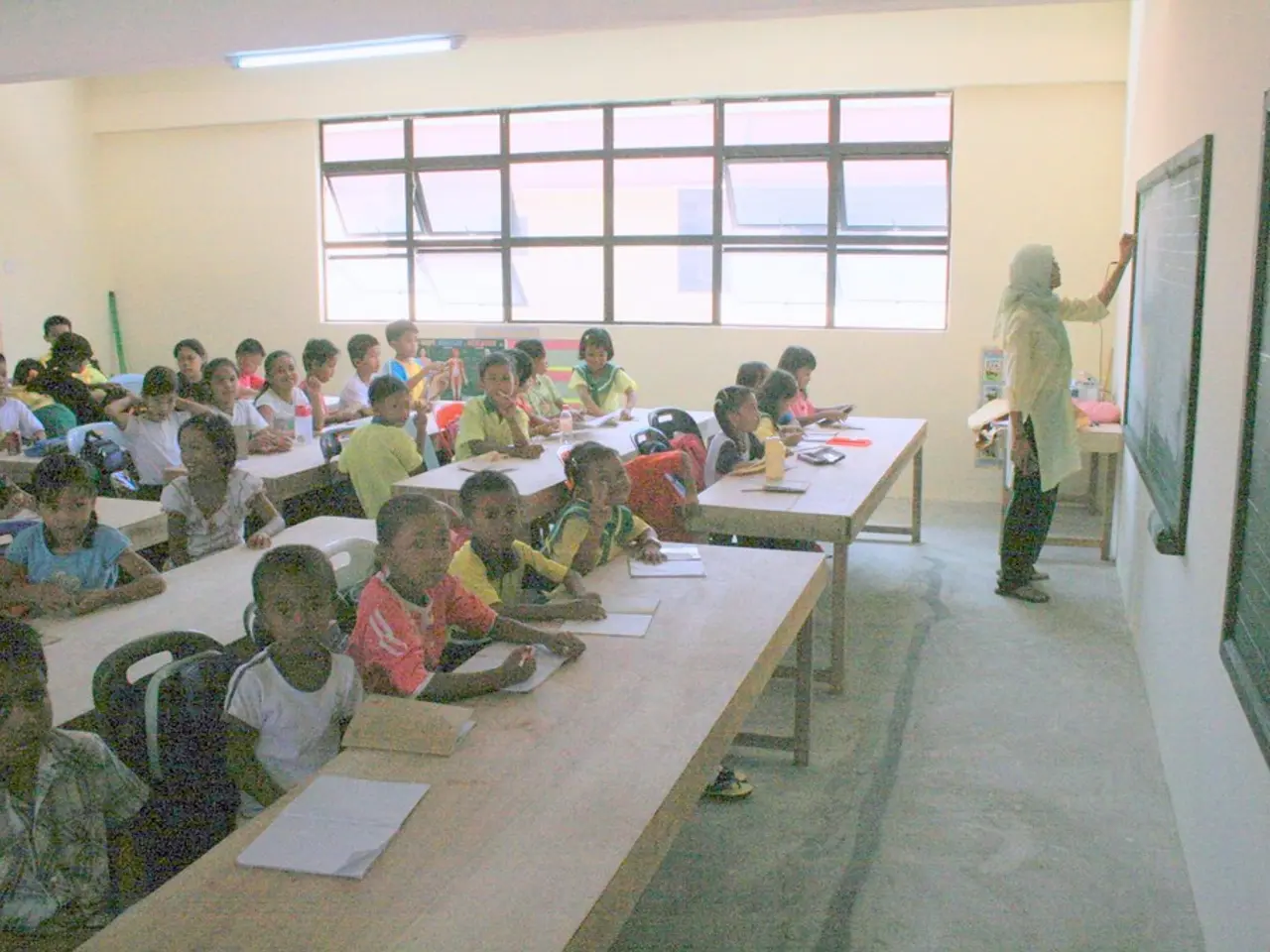Zoning of educators continues to cause uncertainty regarding the allocation of difficult situation payments
In the heart of Kenya's education sector, a contentious issue has arisen regarding the hardship allowances given to teachers working in challenging conditions. This allowance is intended to compensate teachers for enduring difficult living conditions such as poor infrastructure, harsh climates, insecurity, and a lack of basic amenities.
The Teachers Service Commission (TSC) is responsible for administering these allowances, while the State Department for Public Service and Human Capital Development identifies hardship areas. However, the process of determining which regions qualify as hardship zones remains a subject of debate.
Recently, Isiolo Woman Representative Momina Bonaya demanded clarification on why Isiolo Municipality has not been reclassified under Cluster 3 for house allowance. This demand follows concerns raised by Githunguri MP Gathoni Wamuchomba, who accused the government of side-lining Parliament and unions in ongoing discussions over reclassification of hardship areas.
The Kenya Union of Post-Primary Education Teachers (KUPPET) chairman, Omboko Milemba, defended the engagement with State House, stating that the union had successfully pushed back against planned deductions. Yet, MPs warn that reclassification may return through Parliament, potentially cutting benefits for thousands of teachers.
The Ministry of Public Service has initiated a review of hardship areas in line with socio-economic developments, raising expectations of a new "graduated model" of hardship pay. This proposed model could address the contradictions between different players, including Parliament, unions, the TSC, and the Ministry of Public Service, which have left teachers in limbo.
President William Ruto has assured teachers that hardship allowances would not be reduced. However, unions argue that the matter is yet to be conclusively settled. Wamuchomba urged that matters of hardship should not be politicized but handled transparently, through unions and Parliament, not backroom deals.
The debate over hardship allowances centres on whether it should remain uniform across all hardship zones, regardless of the severity of conditions. Critics argue that a teacher posted in Turkana faces far greater challenges than one in Nyandarua, yet both receive the same allowance.
The hardship allowance is provided for under Regulation 91 of the Code of Regulations for Teachers (CORT) and the 2025-2029 Collective Bargaining Agreement (CBA). The issue of hardship allowances must be seen within the broader context of CBA financing, with the CBA costing Sh30 billion and already Sh8.6 billion having been spent, leaving Sh21.4 billion.
Acting TSC CEO Everleen Mitei stated that teachers in Isiolo are already benefitting from an enhanced house allowance following the 2021-2025 CBA. The Salaries and Remuneration Commission advises on the levels of allowances payable.
As the discussions continue, teachers in over 118,000 teachers in 35 counties await a resolution, hoping for a fair and transparent system that acknowledges and compensates the unique challenges they face in their respective hardship zones. Gathoni Wamuchomba warned that until a harmonized framework is institutionalized, teachers will continue to face uncertainty.
Read also:
- Cultivating Adaptable Companies: The Strength of an Educative Environment
- Heed this: There's no more room for turning back.
- International Widows' Day Highlights Anglican Church's Outreach to Widows and Families in Africa
- Leading Human Resources Leaders Poised to Assume Roles of Cultural Advocates, Guardians of Evolution, and Data Analysis Experts




